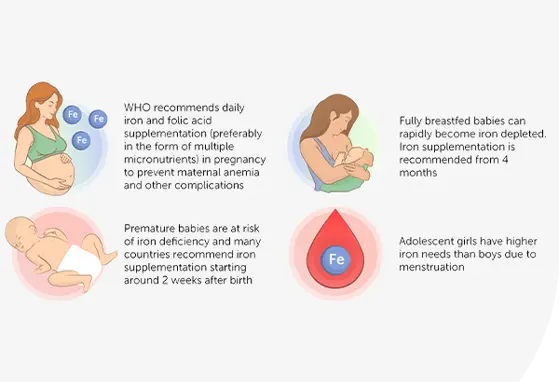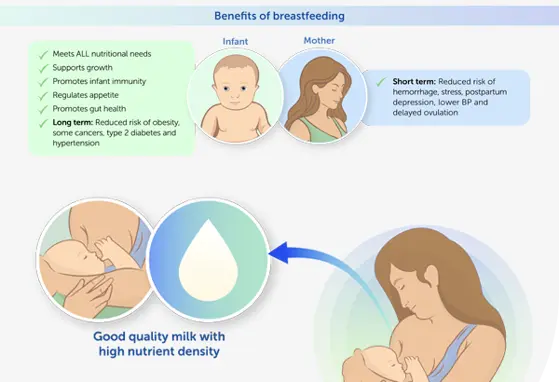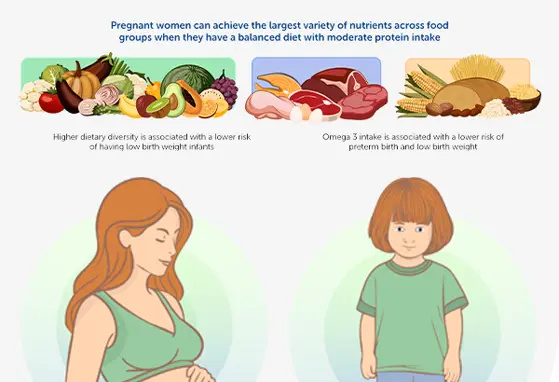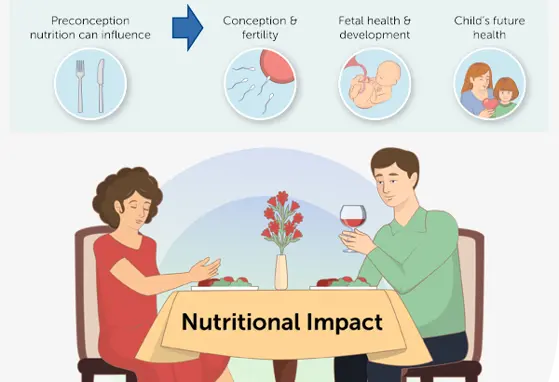How does Gestational Diabetes affect mother and baby?

There is an increased prevalence of Gestational diabetes (GDM) globally. GDM can raise the odds of complications during pregnancy as well as the future risk for both the mother and the child1. GDM affects 3 out of 10 pregnant women, and this rise in cases comes alongside a dramatic increase in metabolic problems and obesity among women of childbearing age.2 In Europe alone, 7.8% of pregnant women suffer from GDM. Surprisingly, the figures are even higher in South-East Asia (20.8%) and the Middle East (27.6%).3
GDM increases health risks like type 2 diabetes mellitus, cardiovascular disease, metabolic syndrome, and obesity for both the mother and the child.1,3,4,7
Health consequences of GDM for mom and baby
- Cesarean and operative vaginal delivery
- Macrosomia
- Shoulder dystocia
- Neonatal hypoglycemia
- Hyperbilirubinemia

An observational study conducted across several countries, including more than 23,000 women,4 found increased adverse pregnancy outcomes with increasing glycemia.4 Women who had GDM earlier are at risk of developing diabetes years after the pregnancy. Their children are also at risk of developing diabetes and obesity. Hence, it is essential to focus on gestational diabetes in pregnant women to mitigate short and long-term consequences for both the mother and the child.2
Risk factors for GDM
According to the Australasian Diabetes in Pregnancy Society guidelines, the risk factors of GDM include:
- Previously elevated blood glucose level4
- Previous hyperglycemia in pregnancy4
- Family history of diabetes mellitus4
- Maternal age more than 40 years4
- Ethnicity (Asian, Middle Eastern, and African)4
- High pre-pregnancy body mass index (BMI)4
- Previous history of macrosomia4,5
- Polycystic ovary syndrome (PCOS)4,5
- Use of medications such as corticosteroids and antipsychotics4
American Diabetes Association (ADA) recommendations for screening for GDM
- Pregnant women with risk factors of diabetes should be screened for type 2 diabetes mellitus at the first prenatal visit5
- Pregnant women with no history of diabetes can be assessed for GDM at 24 to 28 weeks of gestation5
- Pregnant women diagnosed with diabetes should be assessed for persistent diabetes at 6 to 12 weeks after childbirth5
- Women with a history of GDM should be evaluated every three years throughout their lifetime5
Strategies to diagnose GDM
Considering the high prevalence of GDM, and the maternal and fetal morbidity associated with untreated or inappropriately managed GDM, the timely diagnosis of GDM will allow the initiation of appropriate treatment to prevent and minimize the ill effects of uncontrolled GDM on the mother and child in the short term and long term.1
The oral glucose tolerance test (OGTT) is the most common glucose tolerance test, which measures the body’s response to blood glucose [6]. It is used to diagnose diabetes, gestational diabetes, and prediabetes. In this test, the plasma glucose is assessed 2 hours after ingesting 75 g of oral glucose dissolved in 300 ml of water.1 The blood glucose assessment is done with a standardized plasma glucometer. Blood glucose levels of ≥140 mg/dL confirm the diagnosis of GDM.1
GDM screening as per the American and Canadian guidelines:
| GDM screening as per the National Institute for Health and Care Excellence (NICE) and Australian guidelines:
|
Conclusion
Gestational diabetes can raise the odds of pregnancy complications. Diagnosis of GDM may help devise management strategies to improve maternal and fetal outcomes.4
References
- National Guidelines for Diagnosis & Management of Gestational Diabetes Mellitus, Maternal Health Division Ministry of Health and Family Welfare Government of India; December 2014. Available at: https://nhm.gov.in Accessed on 5th July 2022.
- Castillo-Castrejon M, Powell TL. Placental nutrient transport in gestational diabetic pregnancies. Frontiers in endocrinology. 2017 Nov 7;8:306.
- Wang H, Li N, Chivese T, Werfalli M, Sun H, Yuen L, Hoegfeldt CA, Powe CE, Immanuel J, Karuranga S, Divakar H. IDF Diabetes Atlas: Estimation of Global and Regional Gestational Diabetes Mellitus Prevalence for 2021 by International Association of Diabetes in Pregnancy Study Group’s Criteria. Diabetes research and clinical practice. Jan 2022; 183:109050.
- Nankervis A, Price S, Conn J. Gestational diabetes mellitus: A pragmatic approach to diagnosis and management. Australian Journal of general practice. Jul 2018;47(7):445-9.
- Gestational Diabetes Mellitus. Available at: https://www.hopkinsmedicine.org. Accessed on 5th July 2022.
- Kampmann U, Madsen LR, Skajaa GO, Iversen DS, Moeller N, Ovesen P. Gestational diabetes: A clinical update. World J Diabetes. 2015 Jul 25;6(8):1065-72. doi: 10.4239/wjd.v6.i8.1065.
- Sweeting A, Wong J, Murphy HR, Ross GP. A clinical update on Gestational Diabetes Mellitus. Endocrine reviews. Jan 2022.
If you liked this post you may also like

Calcium and Iron Nutrition Through the Reproductive Life Course


